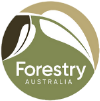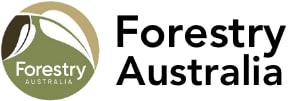
Bushfire recovery harvesting appropriate subject to strict controls
MEDIA RELEASE
31 January 2020
Summary
Suggestions a blanket no to recovery harvesting operations is too simplistic and a one size fits all approach should not be adopted.
A systematic plan that takes into consideration a range of matters such as protecting the diversity of the forest environment, local community needs and economic values needs to be applied.
A planned approach ensures that not only is the environment best protected and biodiversity is preserved, but also the local communities dependent on these forests for jobs during the bush fire recovery period can continue as well as creating valuable economic stimulus to the rest of the region in a time of economic hardship.
Position
The peak organisation representing some 1,200 professional and scientific forest land managers have released a position paper supporting bushfire recovery harvesting operations post forest fires on the proviso of strict publicly accountable controls.
Institute of Foresters of Australia and Australian Forest Growers (IFA/AFG) President, Bob Gordon said the IFA/AFG had developed the position paper to ensure there was informed debate on the issue of bushfire recovery harvesting given the devastating 2020 bushfires that continue to burn throughout the eastern seaboard.
“The IFA/AFG supports the use of post-fire recovery harvesting operations in productive and available forests that have been severely burnt and killed by fires,” Mr Gordon said.
“Such post-fire recovery harvesting is a means of maintaining sustainable utilisation and regeneration of natural resources, while reducing the safety risks to people working in or travelling though the forests, and reducing the potential risks posed by future bushfire events.
Mr Gordon said any bushfire recovery harvesting should be subject to a number of strict conditions.
“Firstly, recovery bushfire harvesting should only occur in forests earmarked for future forestry production,” Mr Gordon said.
“Secondly a plan should be developed quickly in each individual site to ensure biodiversity, soil, water and cultural heritage are protected.
“For native forests in particular, planners and managers need to give attention to retaining diversity across the forest through the retention of large hollow-bearing habitat such as trees to support recovering populations of animals, birds as well as other flora and fauna.
“In addition, practices in native forests should include minimal physical site disturbance to reduce distribution to regeneration of a range of flora species.
“Agencies with interest in land management must work quickly and should be given the opportunity to input into these plans particularly in areas of biodiversity, conservation, water catchment, soil management, indigenous and non-indigenous cultural values, tourism and recreational values.”
Mr Gordon said post fire recovery plans should also incorporate feedback from local government, regional communities as well as be subject to independent audit by environmental regulators.
“To suggest a blanket no to recovery harvesting operations is too simplistic and a one size fits all approach should not be adopted,” Mr Gordon said.
“Instead a systematic plan that takes into consideration a range of matters such as protecting the diversity of the forest environment, local community needs and economic values needs to be applied.
“This ensures that not only is the environment best protected and biodiversity is preserved, but also the local communities dependent on these forests for jobs during the bush fire recovery period can continue as well as creating valuable economic stimulus to the rest of the region in a time of economic hardship.”
To read Position Paper – Bushfire Recovery Harvesting Operations, click HERE
ENDS
Media contact:
Becher Townshend
Font Public Relations
Phone: 0418 370 661

